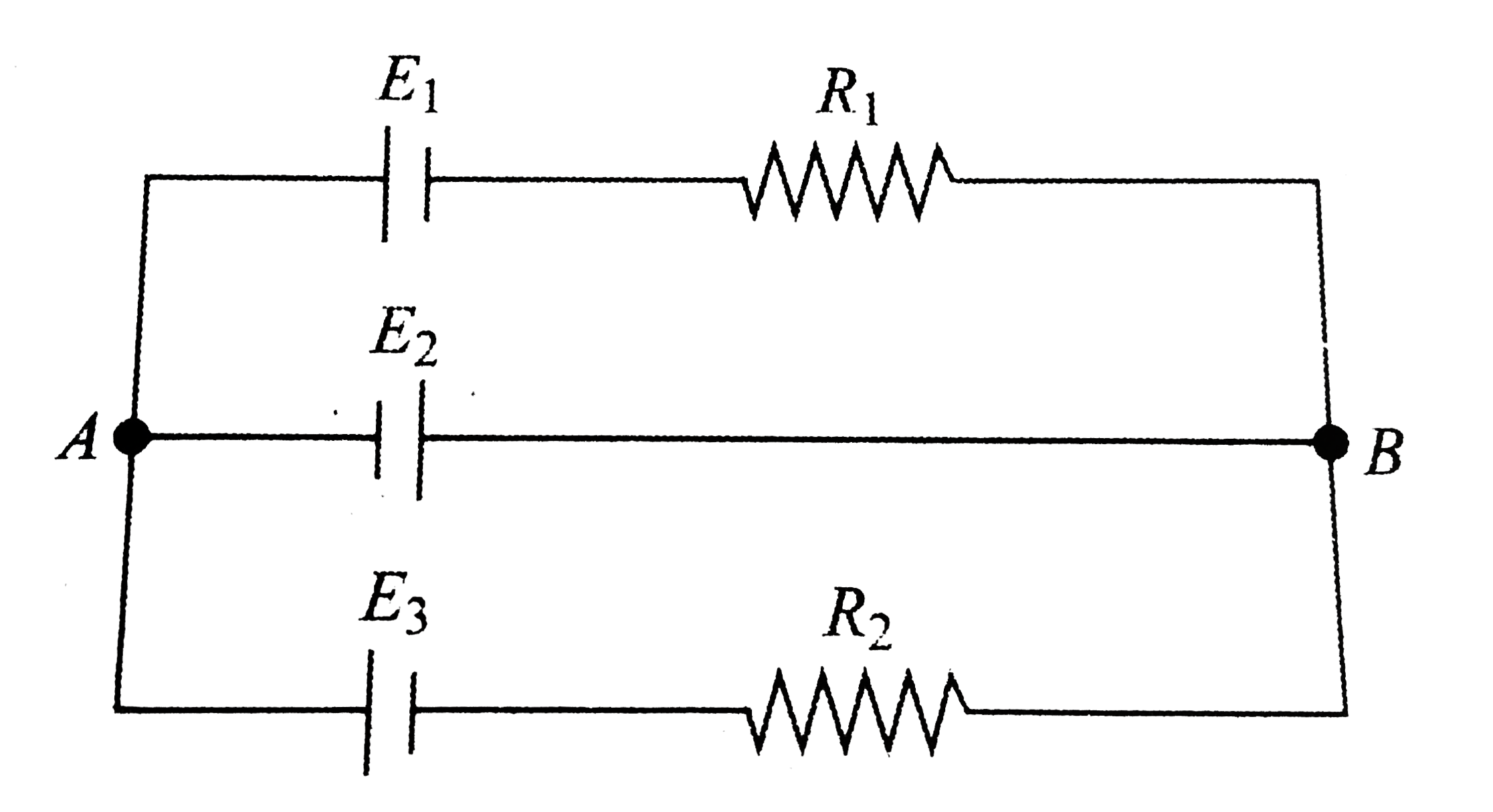In the circuit as shown in figure,
E1=2V,E2=2V,E3=1V,andR=r1=r2=r3Ω.
The potential difference between points A and B will be

1V
2 V
3 V
4 V
The correct Answer is:B
Applying junction law at point E
I1+I2+I3=0 ...(i)
Apply KVL for loop EE1FE2E
I1−3+2−I2=0
or I1−I2=1
∴I2=I1−1 ...(ii)
Apply KVL for the loop EE1FE3E, we have
I1−I3=2
∴I3=I1−−2
From Eqa. (i),(ii), (iii) we, have M
I1=1A,I2=0andI3=−1A
Now, potntial difference between point A and B= potential difference between E and F+ potential difference between A and E.
∴VEF=E2−I2r2+IR
=2−0×1+0=2V
Topper's Solved these Questions
Similar Questions
In the circuit shown in fig. E1=3 volt,E2=2 volt,E3=1 vole and R=r1=r2=r3=1ohm.
(i) Find potential difference in Volt between the points A and B with A & B unconnected.
(ii) If r2 is short circuited and the point A is coneted to point B through a zero resistance wire, find the current through R in ampere.

View SolutionIn the circuit shown in figure ,(ε)1=3V,(ε)2=2V,(ε)3=1Vandr1=r2=r3=1(Ω).Find the potential difference between the points A and B and the current through each branch.

View Solution
Knowledge Check
In the circuit shown here, E1=E2=E3=2V and R1=R2=4ohms. The current flowing between point A and B through battery E2 is
 AZeroB2amp from A to BC2amp from B to ADNone of the above
AZeroB2amp from A to BC2amp from B to ADNone of the aboveIn the circuit shown in fig. 5.265, E1=E2=E3=2V and R1=R2=4Ω. The current flowing between points A and B through battery E2 is
 AzeroB2 A from A to BC2 A form B to ADnone of the above
AzeroB2 A from A to BC2 A form B to ADnone of the above
In the circuit in figure E1=3V,E2=2V,E3=1V and R=r1−r2−r3=1Ω

a. Find the potential differece between the points A and B and the currents through each branch.
b. If r2 is short circuited and the point A is connected to point B, find the currents through E1,E2,E3 and the resistor R
View SolutionIn the circuit shown in figure ,(ε)1=3V,(ε)2=2V,(ε)3=1Vandr1=r2=r3=1(Ω).Find the potential difference between the points A and B and the current through each branch.

View SolutionIn the circuit shown in fig E1=3vo<s,E2=2vo<s,E3=1vo<andR=r1=r2=r3=1ohm.

(i) Find the potential difference between the points A and B and the currents through each branch.
(ii) If r2 is short circuited and the point A is connected to point B, find the current through E1,E2,E3 and the resistor R.
View SolutionIn the circuit shown in fig. E1=3 volt,E2=2 volt,E3=1 vole and R=r1=r2=r3=1ohm.
(i) Find potential difference in Volt between the points A and B with A & B unconnected.
(ii) If r2 is short circuited and the point A is coneted to point B through a zero resistance wire, find the current through R in ampere.

View SolutionIn the circuit shown in figure

E1=10V,E2=4V,r1=r2=1Ω and R=2Ω.
Find the potential difference across battery 1 and battery 2.
View SolutionIn the following circuit E1=E2=E32V and R1=R2=AΩ. The current passing through battery E2 between points A and B is

View Solution
